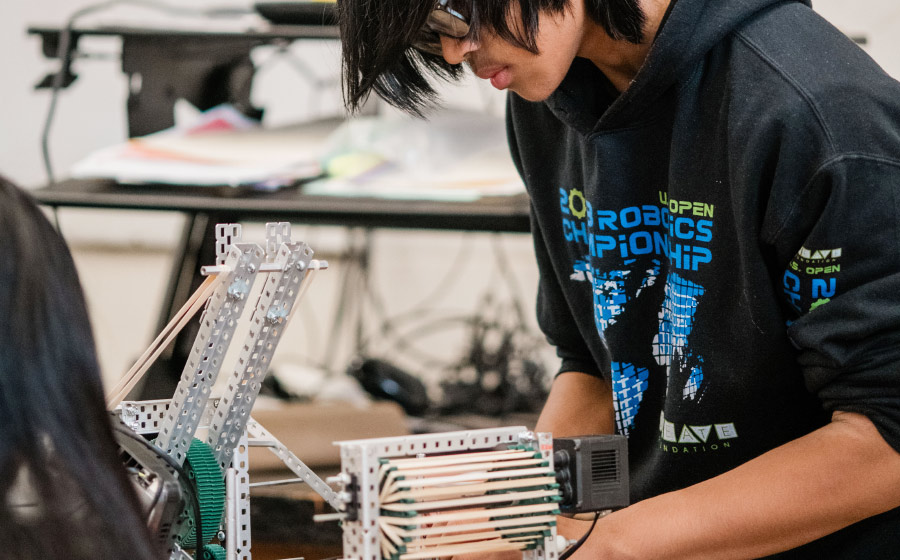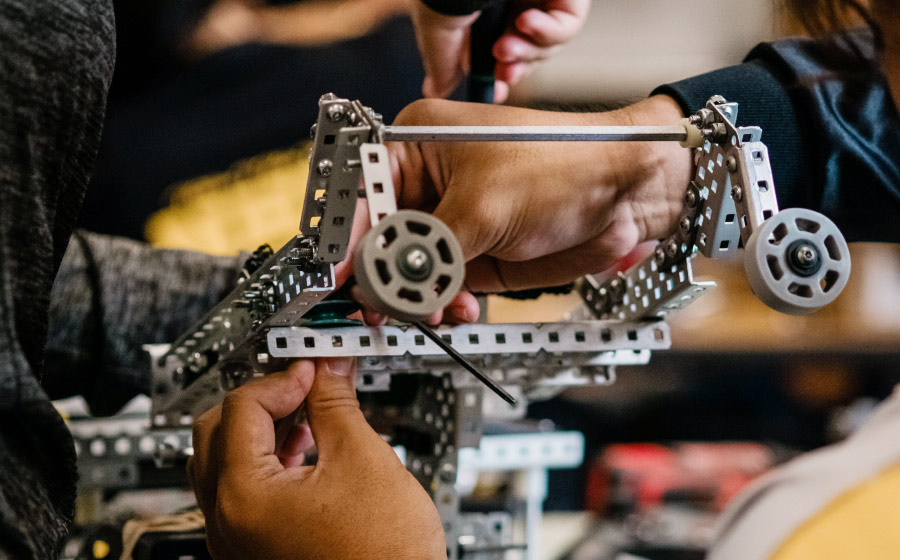At Nānākuli High & Intermediate School, students build robots and life skills.
From the outside, the robotics lab at Nānākuli High & Intermediate School looks like any other classroom. Inside, however, the place is abuzz with the excitement of an upcoming competition. The whiteboards are filled with complex notes. Robot components of every variety fill the cubbies. Trophies are proudly displayed as daily reminders of earlier hard work paying off.
The after-school robotics program is a crash course in all four disciplines of science, technology, engineering, and mathematics (STEM). Richard Enright, a retired Navy master chief and engineering instructor, founded the program 16 years ago. Since then, he has taught dozens of students life lessons through robotics, including perseverance, adaptability, and ingenuity.

One such student is junior Erica Fulgencio, who joined the program in seventh grade, drawn by the opportunity to brainstorm innovative ideas and designs. “In robotics there are a lot of things that can help you improve as a person,” Fulgencio says. “You can become a better problem solver, critical thinker, and put all of your creativity skills into robotics as well.”
Perhaps the program’s greatest lesson is accepting that failure happens. When it does, Enright’s team has learned to view setbacks as an opportunity to pick themselves up, regroup, and try again. This mindset, coupled with the ability to think outside of the box, will help them to discover novel answers to life’s pressing problems, both in the robotics lab and out.
Under Enright’s helm, the team has competed at several events, including the VEX Robotics National Championship in Council Bluffs, Iowa, and the VEX Robotics World Championship in Dallas, Texas. Although transportation and accommodation are expensive, Enright believes that these trips are crucial for his students, many of whom have never had the resources to leave Hawaiʻi. By competing abroad, students meet opponents from across the globe and benefit from the cultural exchange afforded by travel.

Currently, the program is funded through corporate sponsorships, fundraisers, and donations. As youth interest in robotics continues to grow, Enright hopes the state will bolster financial support for students on the robotics team, much like it does for traditional school sports like football or soccer. “We talk about each generation making strides; we are creating what they need to be successful so that they can live well,” Enright says. “We might not be doing traditional sports, but we are doing something really good–it’s sports of the mind.”
Learn more about Golden Hawks Robotics, visit nanakuliroboticsclub.com.
Follow on instagam @goldenhawks_robotics
Image Gallery




